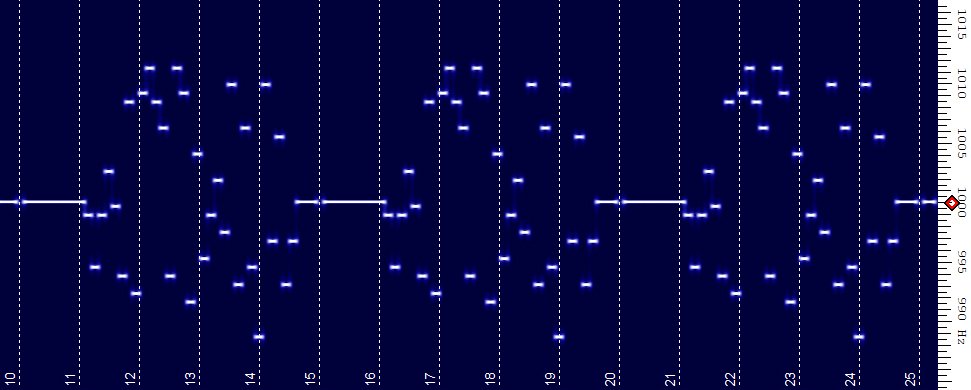Lentus


Here are 3 identical messages, sent over a 15-minute time period by a very new developmental amateur radio mode called "Lentus.". This is Latin for "slow," which it obviously is. These time division lines are in minutes, not seconds. Each 43-character message (75 payload data bits) required five minutes to send. Furthermore, a look at the frequency scale will show how close together the mode's 32 multiple-frequency-shift keying tones are.
The signal here is locally generated. It's in beacon mode, which simply repeats the same data, in this case my call (NV6H) and some made-up station information. In real world communication, decode sync is achieved on the receiving side, through precise timing (+/- 0.1 seconds) and frequency stability (within 3 Hz/minute).
Lentus has such a low transmission rate in order to work so far below the noise (around -30 dB) that it can be practically invisible on plots of real signals. As of early 2012, it only appears in test versions of Multipsk by Patrick Lindecker (F6CTE).
Plot made with Spectrum Lab.